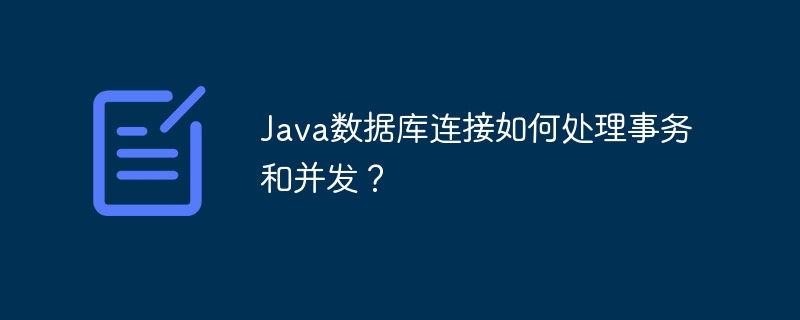
Transactions ensure database data integrity, including atomicity, consistency, isolation and durability. JDBC uses the Connection interface to provide transaction control (setAutoCommit, commit, rollback). Concurrency control mechanisms coordinate concurrent operations, using locks or optimistic/pessimistic concurrency control to achieve transaction isolation to prevent data inconsistencies.

Java Database Connection: Transactions and Concurrency Processing
A transaction is a series of operations in the database that either all succeed or all fail . Transactions ensure the integrity of database data and prevent concurrent operations from causing data inconsistencies.
The concept of transaction
Transaction Control
Java Database Connection API (JDBC) provides the Connection interface to manage transactions:
setAutoCommit(false): Disable automatic commit and require manual submission of transactions. commit(): Submit the current transaction to make the modification permanent. rollback(): Roll back the current transaction and undo all modifications. Concurrency control
Concurrent operation means that when multiple transactions access the same data at the same time, there is a risk of data inconsistency. The concurrency control mechanism is used to coordinate these concurrent operations and achieve transaction isolation:
Practical Case
Consider the following code example:
Connection conn =DriverManager.getConnection("jdbc:mysql://localhost:3306/database", "user", "password");
conn.setAutoCommit(false); // 禁用自动提交
try {
// 执行事务中的操作
...
conn.commit(); // 提交事务
} catch (SQLException e) {
conn.rollback(); // 回滚事务
} finally {
conn.close(); // 关闭连接
}This code demonstrates how to use JDBC to manage transactions. It first disables autocommit and then performs the operations within the transaction. Finally, it attempts to commit the transaction and rolls it back if it fails.
Following these principles can ensure the correctness of transactions and concurrency processing in Java database connections and prevent data inconsistencies and concurrency problems.
The above is the detailed content of How does Java database connection handle transactions and concurrency?. For more information, please follow other related articles on the PHP Chinese website!
